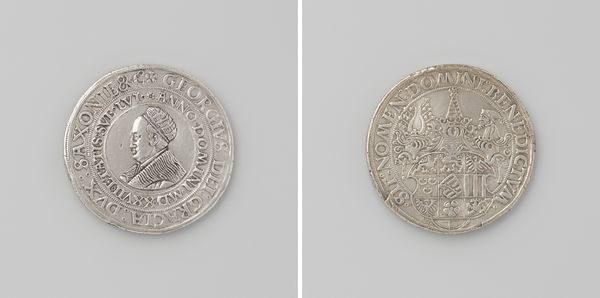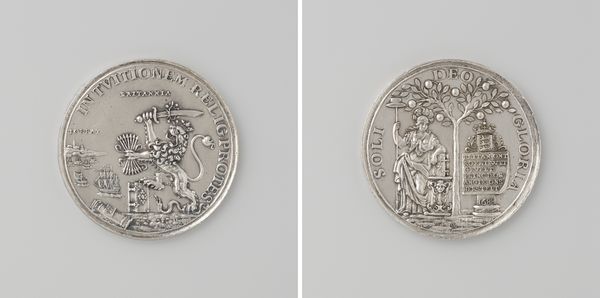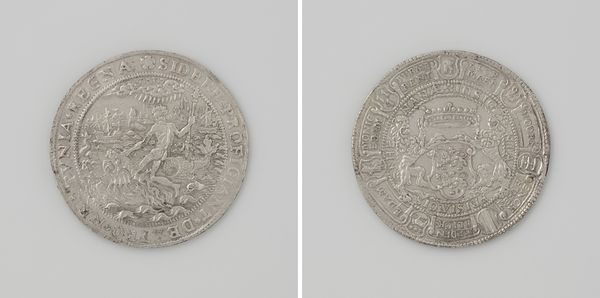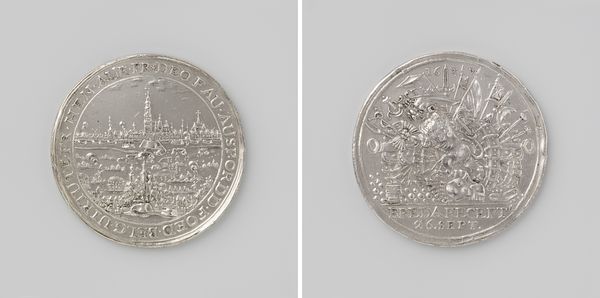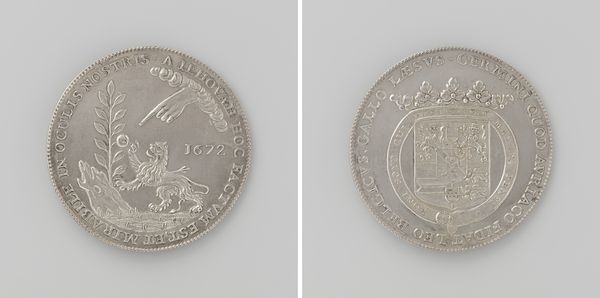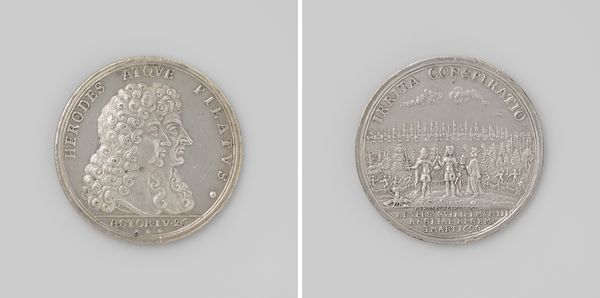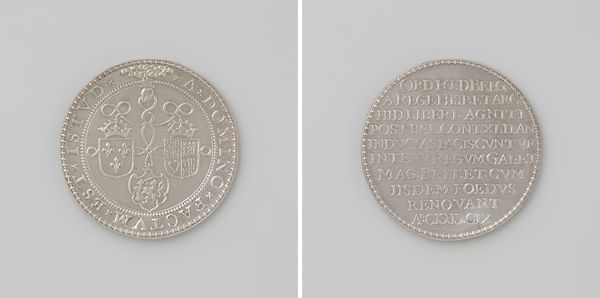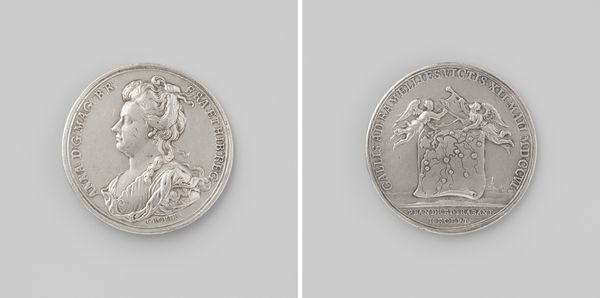
#
natural stone pattern
#
3d sculpting
#
decorative element
#
3d printed part
#
rounded shape
#
jewelry design
#
sculptural image
#
3d shape
#
stoneware
#
ceramic
Dimensions: diameter 4.6 cm, weight 26.49 gr
Copyright: Rijks Museum: Open Domain
Curator: Today we're examining a commemorative silver medal from 1660, titled "Dood van Karel X Gustaaf, koning van Zweden," an anonymous piece which captures a pivotal historical moment. Editor: My initial impression is one of solemnity, even starkness. The high relief imagery and crisp details certainly underscore the gravity of the subject matter. What catches my attention immediately is the visual and symbolic contrast between the figures. Curator: Indeed, let’s unpack those compositional elements. On one side, we observe a kneeling figure being crowned, bathed in divine light emanating from above, perhaps representing heavenly ascent or validation of power. On the other side, there is dense text surrounded by ornamentation. Semiotically, it creates a binary, highlighting ideas of transition. Editor: And the very material itself – silver - carries so much historical and material weight. Beyond being precious, silver's malleability made such detailed engraving possible. Do we know much about the artisans who produced medals like these, particularly this example? How many hands and processes were involved to translate concept into physical reality? Curator: Historical records are, regrettably, scant in this instance. However, consider the lettering itself. It demonstrates calligraphic refinement that denotes formal sophistication. That precise construction reveals the importance that textual meaning assumed. Editor: I keep considering the conditions surrounding its production. Access to raw materials, the infrastructure supporting craftspeople, and finally, the patronage networks enabling distribution – all these shaped the medal's very existence. Did such pieces primarily function as diplomatic gifts or as personal keepsakes amongst the elite? Curator: That intersection between functionality and symbolism certainly deepens our understanding of the artifact. Ultimately, it's through observing such considered details and engaging historical lenses that we uncover narrative potential within a formal artwork. Editor: Exactly, because looking at a physical item, such as this silver medal, helps me reflect on tangible lives that intersected during the labor-intensive endeavor involved to produce an artistic symbol from natural elements that lasted across centuries. That awareness changes our connection to artwork, history, and production, for better.
Comments
No comments
Be the first to comment and join the conversation on the ultimate creative platform.
